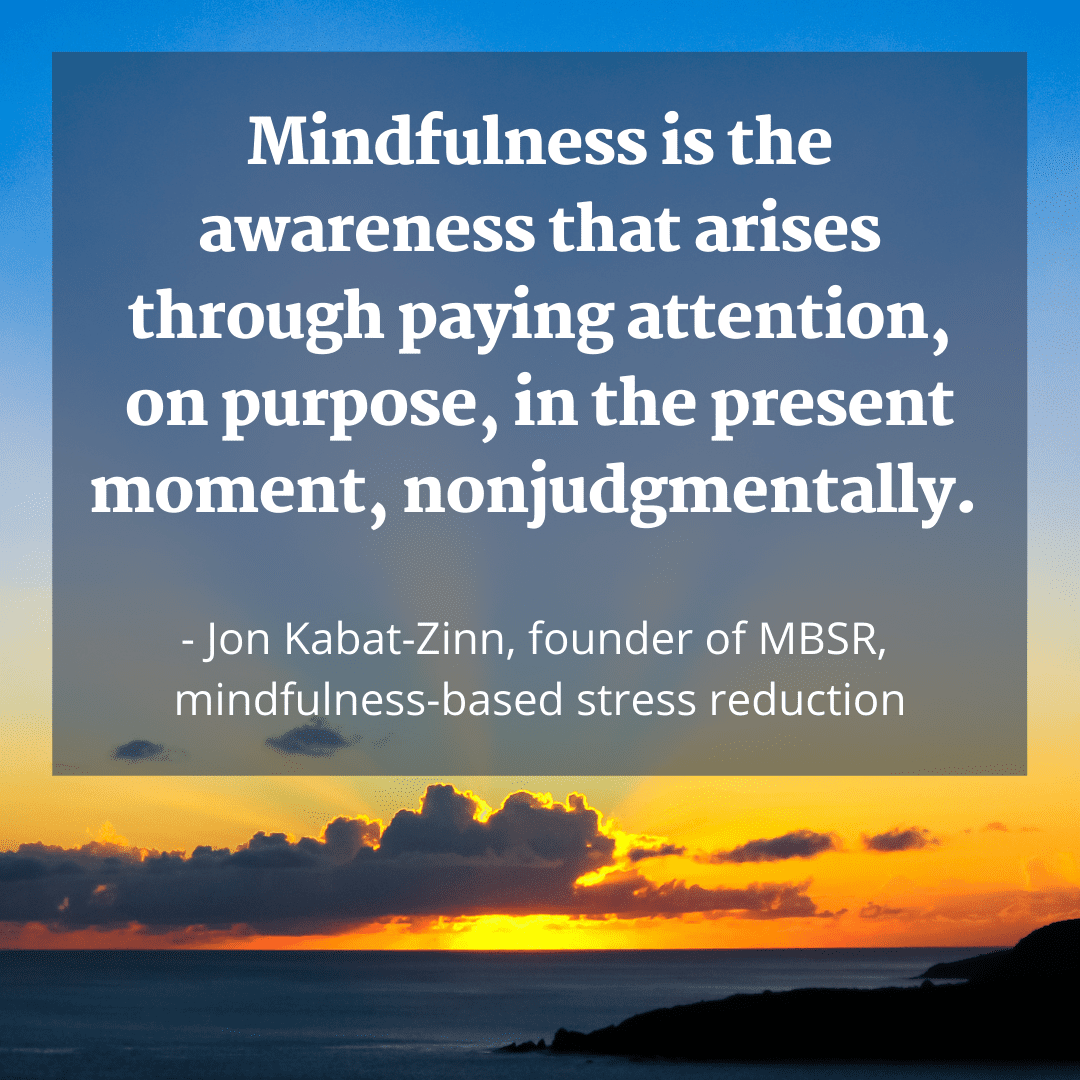Wayne Benenson, Ph.D., aka “Dr. B,” an educator and researcher on peer mediation, shares his practice of mindfulness with the East Valley JCC community.
WAYNE BENENSON, PH.D.
For several years, I have been a mindfulness teacher in a local public school and on Zoom. I try to notice what’s happening around me without being overly reactive or overwhelmed. So it’s always embarrassing when I become aware of my own runaway mindlessness (especially when it’s pointed out to me by my wife!).
During a recent traffic delay due to street repairs, I experienced a “both/and” moment: BOTH a tumbling down the rabbit-hole of naming and blaming other drivers and the construction crew for my predicament AND a recognition of the folly and fullness of the moment.

My personal mindfulness practice has taught me to be alert to meta-awareness, i.e. paying attention to what my mind is doing. Yep, for sure, my mind was triggered into a reactive loop – I’m gonna be late and there is nothing I can do about that. And at the same time I became aware that I could shift my attention.
After some slow and soothing conscious breaths, I found myself focusing on what else was happening. I checked out the nonverbal expressions on the faces of other drivers nearby. Many looked annoyed. They were gonna be late too. Then I noticed the bumper sticker on the car in front of me: It’s all about finding the calm in the chaos. Involuntarily, I chuckled – yep, it was a both/and moment . . . mindlessness and mindfulness all at once.
What is mindfulness?
Mindfulness originated from ancient Buddhist philosophy around 2,500 years ago. The Pali term for mindfulness means to maintain awareness of reality. The aim is to create a state of bare awareness by slowing down to really notice what you are doing. Being mindful is the opposite of rushing or multitasking. When you are mindful, you are taking your time and focusing in a relaxed and alert manner.
The modern concept of mindfulness was introduced to the western world by Jon Kabat-Zinn, a professor emeritus of medicine and the founder of MBSR – mindfulness-based stress reduction – at the University of Massachusetts. His definition of mindfulness has become the standard in the field: “Mindfulness is the awareness that arises through paying attention, on purpose, in the present moment, nonjudgmentally.”

Let’s unpack that a bit.
- First and foremost, mindfulness is the awareness that arises through paying attention, on purpose. This is quite different than the way we are on most days. Many of us spend large parts of our lives on auto pilot, not really aware of what we are experiencing. We are often “in our head,” missing out on the sights and sounds and smells and connections and joys of our world. Our mind seems switched off or caught up in thoughts from the past (regrets) or plans for the future, much of which is repetitive.
- Also, mindfulness is paying attention in the present moment. It is a technique to focus one’s full attention only on the present, experiencing thoughts, feelings and sensations but not judging them. When we practice mindfulness, our thoughts tune into what we’re sensing in the present moment rather than rehashing the past or imagining the future. When we do notice something in the present, our habit often is to judge instantly and react quickly. The results are predictable and painful. Our reactions come from a faulty or limited perspective that restricts our options and creates suffering for ourselves and others.
- Finally, mindfulness is paying attention nonjudgmentally. Besides present-time awareness, mindfulness summons equanimity, just a fancy word for non compulsion and ease. It’s that balance point between suppression of an experience on one hand and entanglement with experience on the other. Mindfulness helps us pause, get a clearer picture of a situation and respond more skillfully. Think of something that’s hard for you to do, say a brain-teaser. Responding negatively can cause stress and distract you from paying full attention to the puzzle. However, if you momentarily accept the challenge with an open attitude and no concern or judgment about performance, a gentle curiosity replaces the crush of making a mistake. By observing instead of reacting, you develop a broader perspective and can choose a more effective response.
There are many different practices that can support the development of mindfulness, including breathing techniques, different types of meditation (formal or informal) and movement, or even simply being in nature. The key point is to consciously notice where we are and what we are doing.
The teacher in me gives you this mindfulness homework (I’m sorry I can’t help it). At least three different times today, look at the sky. Pay attention to the clouds, their shape and color and location. Notice the light and humidity. How has the sky changed throughout the day? As you pay close attention to the vastness of the sky you will be practicing the vastness of mindfulness. Enjoy the moment.

Dr. B, aka Wayne Benenson, Ph.D., has had lots of career opportunities to be mindful: as an elementary and early childhood teacher, a college professor and a researcher on peer mediation. He currently offers mindfulness tutorials, short and sweet (20 minutes), via Zoom. For more information check out his Facebook page at or contact him here.

